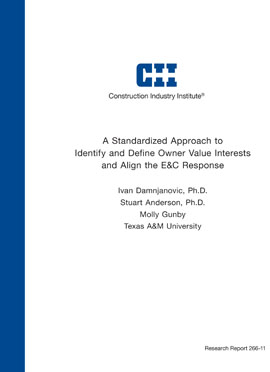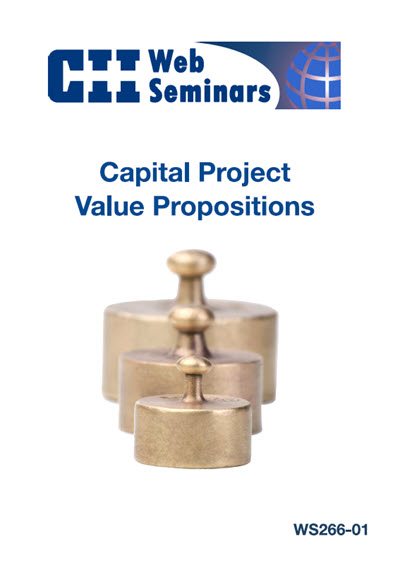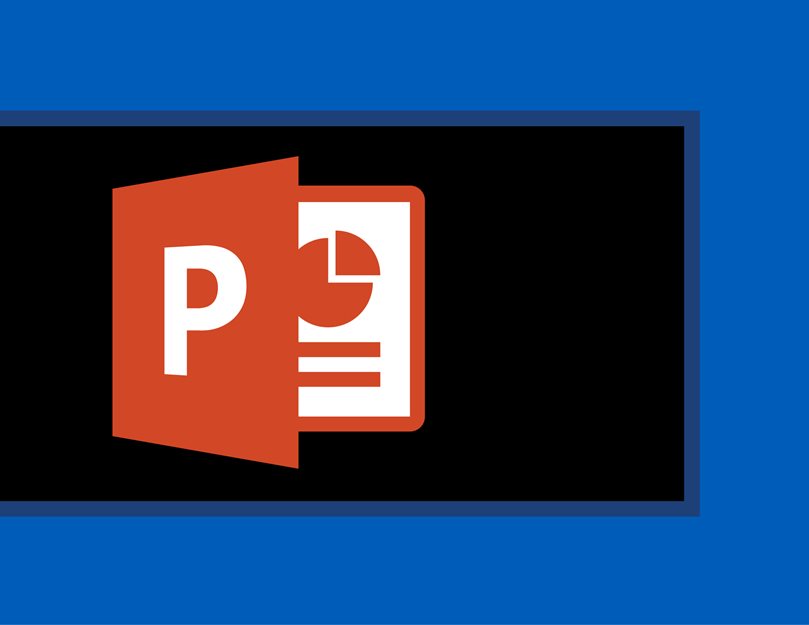
A User's Guide to the CII ValueShare Tool: Value Interest Identification Module and E&C Focus Points & Alignment Module
Problem
Because constructed facilities are key to the operation and strategy of many organizations, these assets are planned, delivered, and managed in ways that maximize the value they bring. While there are many constants in the delivery of a typical construction project, each owner has different priorities and value interests. Project failures are often reported to be the result of miscommunication of these priorities and value interests. This may occur because not enough information is shared between owners and contractors, because incorrect assumptions are made by one or both parties, or because different groups within owner organizations may not be completely aligned around a set of project values. Of course, owners know what their basic project requirements are—budget, schedule, and physical specifications; these are dictated by organizational decisions, market demands, or other constraints. But there are values that a project offers to these organizations that are often difficult to define and even more difficult to measure and communicate. Even when these project values are known and communicated, contractors may not know the best way to respond to them, or owners and contractors may be misaligned on the best execution strategy for achieving them.
This gap in communications has created a need for a standardized approach to identifying and communicating owners’ value interests, and for helping contractors formulate the most appropriate response to these interests. Moreover, in the development of this approach, it is important to safeguard owners against the risks that might follow when the communication of a strong preference for one value interest generates a less diligent response to an undervalued interest.
Solution
The objective of the CII ValueShare Tool is therefore twofold: 1) to assist owners in the identification of their value interests and provide a standardized means of communicating the value interests to contractors, and 2) to help align contractors’ capabilities and resources with owners’ needs and expectations. It achieves the first objective by matching key project characteristics with value interests and by providing owners with a communication venue in which they can convey their value interests and specify the conditions for their achievement. It accomplishes the second objective by suggesting response strategies (focus points) that should be considered by the E&C to ensure the owner’s value interests are successfully addressed. (Here, E&C means any party contracted by an owner to perform design or architectural services, procurement, and/or construction.)
The owner value interests and E&C focus points recommended by this tool are based on both the experience of the industry professionals on the research team and a survey distributed to CII member organizations in mid-2009. The survey was directed at project managers and mid-level executives who were familiar with both the engineering and business aspects of projects. Therefore, the recommendations of this tool represent an average view of the industry environment at that time. Users should consider their current industry environment and project-specific conditions when interpreting and implementing the output of this tool. More information on the survey can be found in Research Report 266-11.
Using the CII Value share tool isolates an owner’s top ten value interests for a project, identifies E&C focus points that best address the value interests and increase chances for success; provides an easy method to accept/reject/change the suggested value interests and E&C responses; achieve owner–E&C alignment by prioritizing the selected value interests; Identify potential conflicting interests and determine acceptable trade-offs and provide means to easily document, share, store, and track the findings and decisions.



